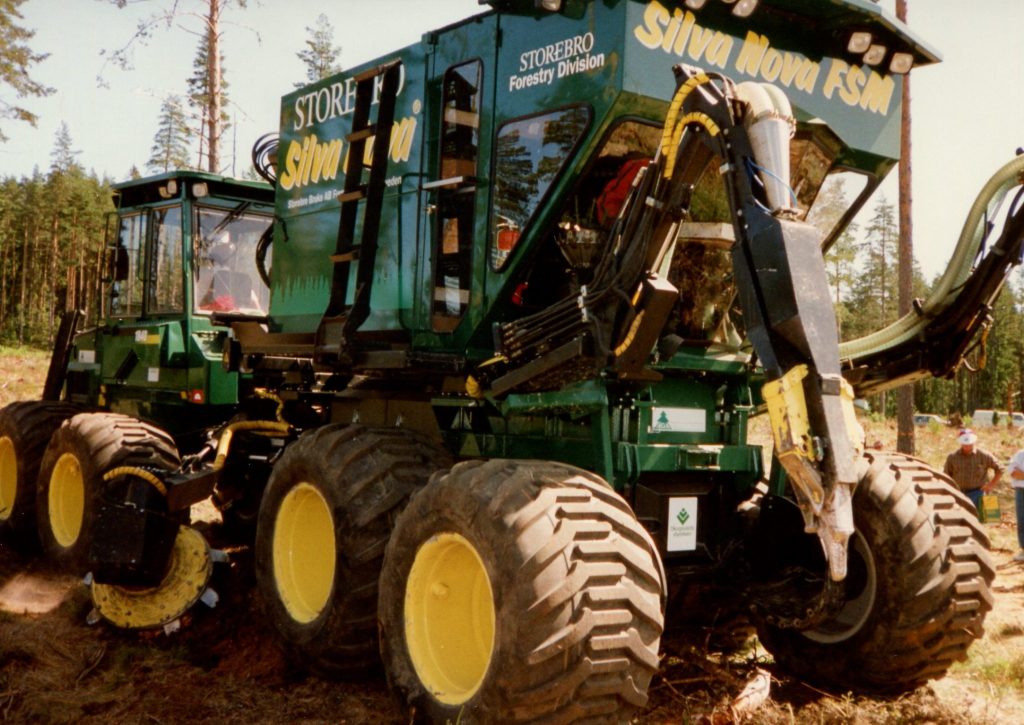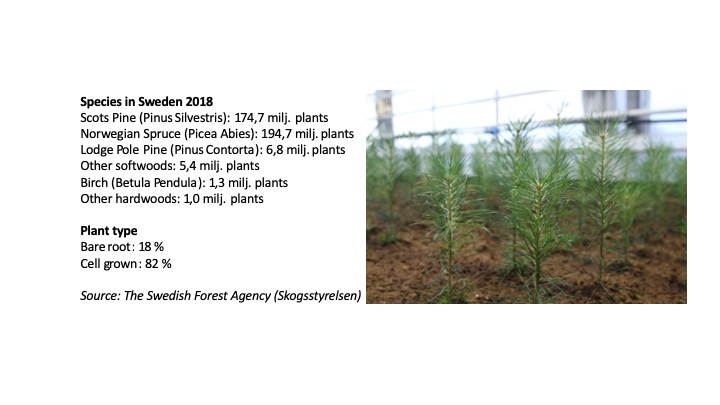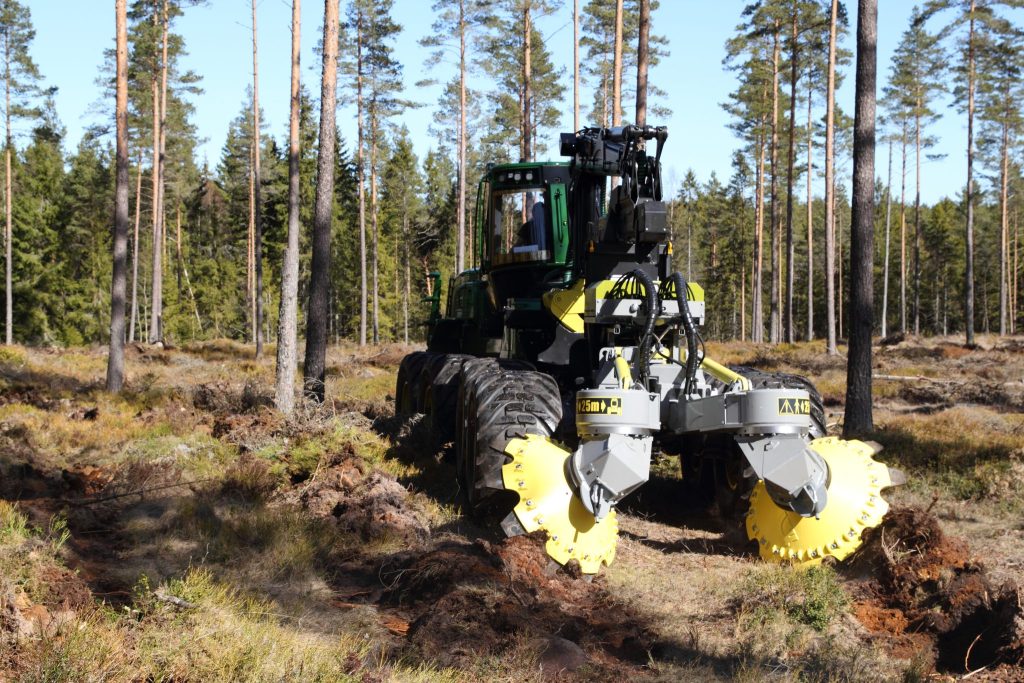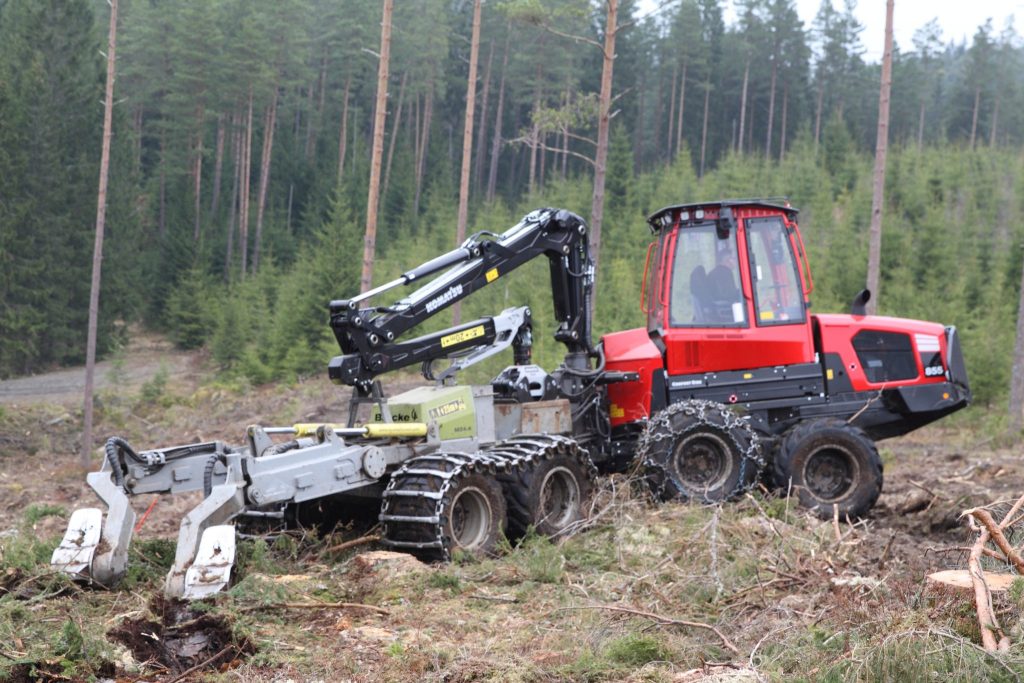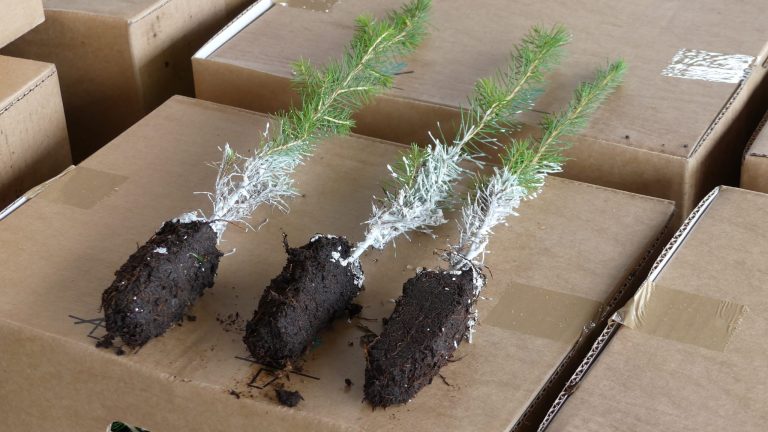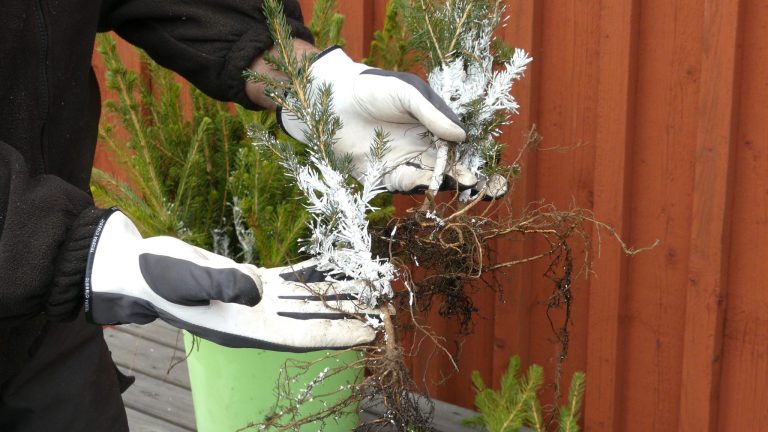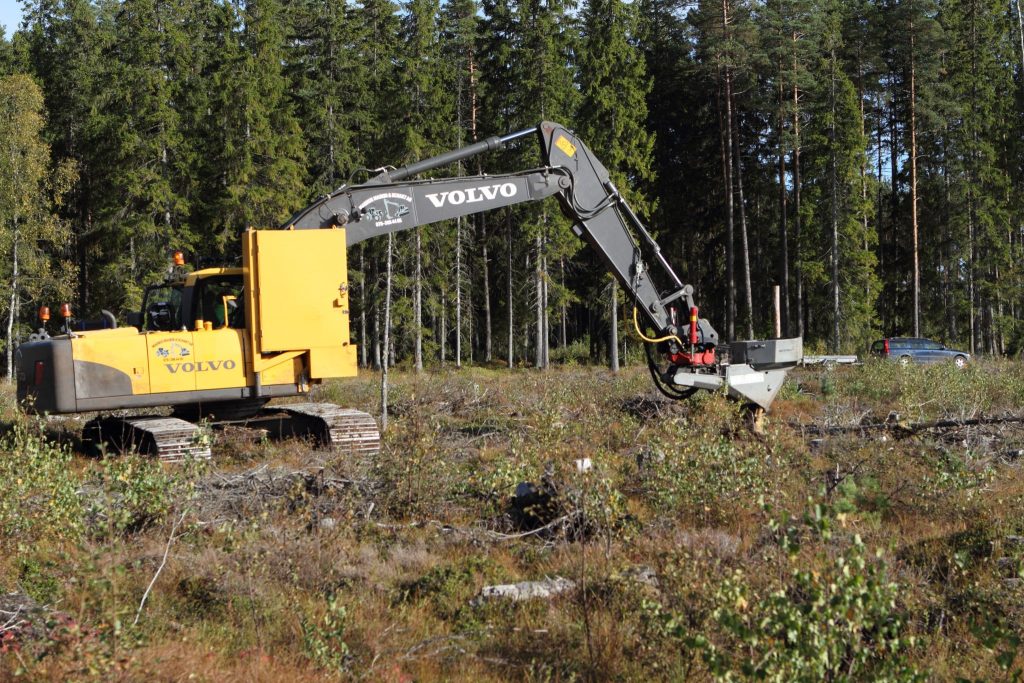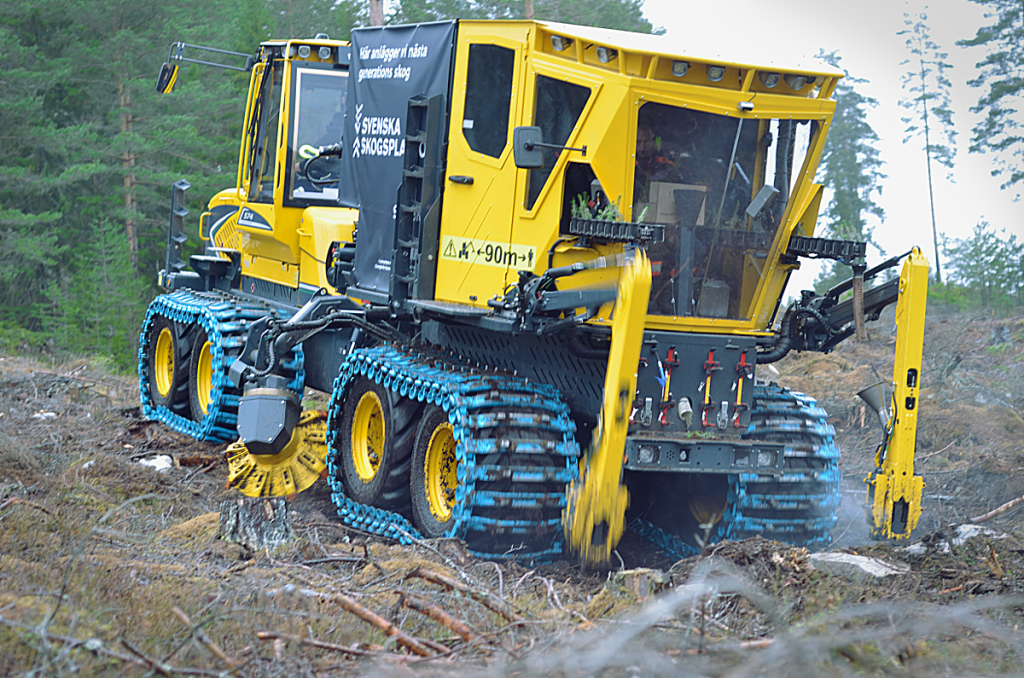Even in the more or less totally mechanized Swedish forestry there are parts that seem to develop slower than others. Reforestation, forest planting, is one of them. For the moment, however, it seems that this is about to change.
Already in the 1970´s there were trials and prototypes for planting machines and by the end of the 80´s it seemed as if the technical solutions actually were so functional that people started to believe in them. The Silva Nova was a complicated, big and heavy planting machine but it worked – eventually.
The walls came down
Around 1990 the political arena was very exciting, not least in northern Europe. The Iron Curtain that had divided Europe in east and west for decades, suddenly was gone. The borders were opened, and people could visit countries they never visited before, and even go there to work.
Cheap labor
That´s exactly what happened. Thousands of labors came over the Baltic Sea, from the Baltic States and Poland, to Sweden and other “west-countries” to work and to make money. They willingly went out into the forest to plant. They made good money, as they were good workers, but for western forest companies they were cheap. So cheap that there was few reasons to continue the development of the planting machines. From the mid 90´s to around 2010 very little was done, but after 2010 things started happening again. More on that here below.
Species
As mentioned in Swedish Forestry # 2 , the species that are used in Sweden are more or less the same two in the whole country; Norwegian Spruce (Picea Abies) and Scots Pine (Pinus Silvestris). In some areas in mid Sweden, Lodge Pole Pine (Pinus Contorta) is also grown.
The most common methods
Approximately 80 % of the reforestation is done by planting. The rest is done by seeding or natural regeneration. As you can see on the picture here above, 82 % of the plants are cell grown which means that they are planted with planting pipes. 18 % are bare root plants for which different kinds of drills or hoes are used. Less than 1 % of the planting in Sweden is done by machines.
Before the planting itself the soil has to be prepared, and that is done by scarifying. The two most common methods of scarifying are trenching or mounding. The trencher makes continuous trenches where the plants are to be planted either in the trench, on the edge between the trench and the inverted turf, or on top of the inverted turf.
The mounder makes mounds of inverted turf intermittent. In this case the plant is supposed to be planted on top of the mound. In both cases the idea is that the roots of the plant shall be under the turf, in the inverted humus layer. When the humus starts to decay it acts like fertilizer and gives the plant a good start ahead of competing vegetation. At the same time, the clean mineral soil around the plant prevents the pine weevil to reach the plant as they don´t like to expose themselves out in the open. 
Tools
As over 80 % of the plants in Sweden are cell grown, the most common tool for planting are different kinds of planting pipes. With those the planter can work in an upright position. The beak of the pipe is pushed into the soil and opened by pushing a pedal. After that the plant is let thru the pipe down to the hole, the pipe is lifted and the soil around the plant is compressed by foot. The beak is closed again, and you move to the next planting spot.
The plants are carried in a special bag or basket on the side of the body. With this system a skilled planter can plant 2 000 – 3 000 plants per day.
For bare root plants either a drill/auger or a hoe is used. You make a hole with whatever tool, you whip the roots of the plant into the hole while holding the tool tight to make the hole big enough for the roots. Finally, you loosen the tool and compress the soil around the plant with your foot.
In this case the plants are carried either in a special bag that hangs on the shoulder or in some kind of bucket. 800 – 1 500 plants per day can be planted with this system.
Mechanized planting
As mentioned above the development of planting machines were more or less zero for many years from the early 90´s until around 2010 (give or take a few years). Very few manufacturers managed to keep their planting machines in their product ranges during those years. After the Silva Nova it was all about simpler, crane tip mounted planting heads that were reliable but not so efficient. A good manual planter could actually get more plants in the ground than a machine.
But there were benefits with some of those planting machines, those that made an inverted turf and planted on top of it. The good thing about this was that the survival rate among the plants was very good. Some research on one of the planting heads, the Bracke P11.a, showed that the survival after three years for machine planted sites was over 95 %, compared to manual planted sites where it was approximately 75 %. 
Nevertheless, when we write 2020, less than 1 % of what´s planted in Sweden is planted with machines. The foreign labor is simply still too cheap to avoid.
How come that the development took off again after 2010?
For many years the whole World was looking at Sweden and Finland when it came to technology for forestry. The most efficient harvesters and forwarders were made in those countries. The most efficient methods were invented here. The most efficient logistic chains for timber also, and so on …
For some reason, unknown to the author of this article, forest companies in the plantation forestry in South America was looking for efficient systems for mechanized planting. As there were not much to choose from, they bought what was available and started to propose improvements and adaptations for the machines to their conditions. The Bracke P11.a was one of them.
The development started to move again. Many of the adaptations that were made for plantation forestry were also suitable for north European conditions. More efficient plant feeding systems, fertilizing, irrigation and better software were things that came thru this development and that could be used also in other parts of the World.
What comes ahead?
In 2019 a project was started by a Swedish nursery chain, “Svenska Skogsplantor”, that is owned by the Swedish State forest, Sveaskog, a project to wake the old Silva Nova up again – under a new name, Plantma X. Again, there are difficulties in getting people to work with forest planting. The people who has done that for the last three decades has started to move home again or have discovered that they can make even more money in other branches.
The bark beetle disaster that has struck central Europe hard has made the demand for planting capacity hit the skies. At the same time that the “classics”, like the Bracke planter, start selling again in Europe, Plantma X and others are looking at both new and old solutions.
We will certainly have reason to come back to this here at NordicWoodJournal.com.
Sources: Swedish Forest Agency (Skogsstyrelsen), Södra, SLU







